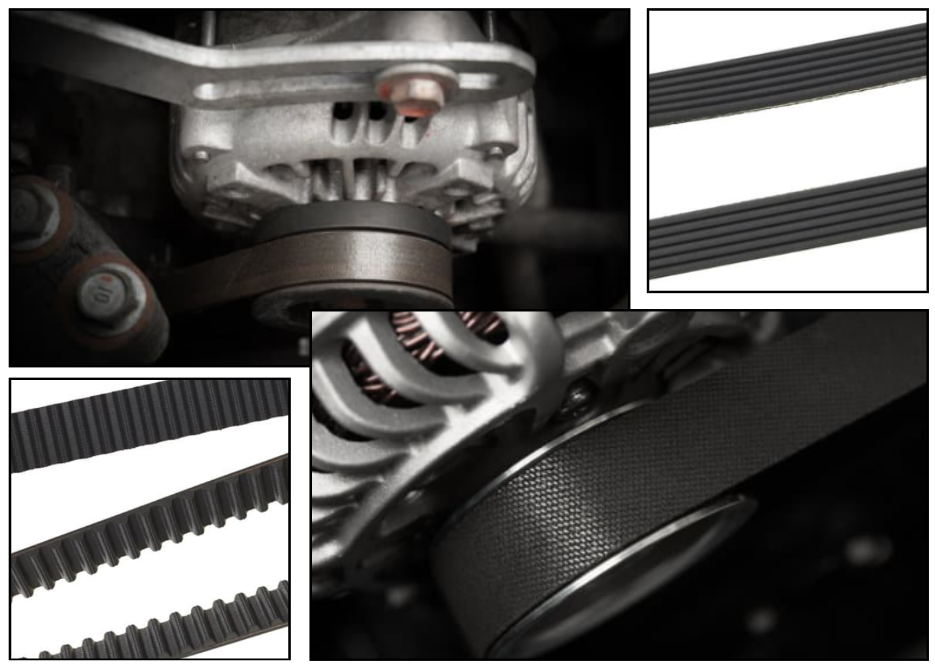Analysis Of The New Energy Vehicle Synchronous Belt Market In The First Half Of 2024
Market Overview
In 2024, the trends in synchronous belts' applications in new energy vehicles (NEVs) demonstrate significant growth and diversification. As the new energy vehicle market expands rapidly, especially with the proliferation of pure electric and hybrid models, the role of synchronous belts in these vehicles becomes increasingly crucial.
Simultaneously, amid escalating environmental pollution and energy crises, new energy vehicles are gaining more attention as clean and efficient transportation solutions. According to market research reports, global sales of new energy vehicles are expected to continue growing steadily in 2024, particularly in major markets such as China, Europe, and North America. This growth directly drives the demand for synchronous belts. Here are some key trends and development directions:
Key market insights
1. Policy Support
Government support for new energy vehicles is a crucial driver of market growth. For instance, China's "dual credit" policy and Europe's carbon emission standards prompt automakers to accelerate the research and production of new energy vehicles, thereby boosting demand in the automotive synchronous belts market.
2. Technological Innovation
Technological innovation is a key factor driving market development. Belt manufacturers are continuously developing new materials and technologies to enhance the performance of automotive synchronous belts. Companies like Gates and ContiTech are investing in high-strength, low-noise, high-temperature-resistant, and chemically-resistant belts, which significantly improve the overall performance of new energy vehicles.
3. Regional Market Differences
- There are variations in market demand and growth rates across different regions:
- China: As the world's largest market for new energy vehicles, China enjoys significant advantages in policy support and market demand. By 2024, the Chinese market is expected to hold the largest share of the global market for automotive synchronous belts.
- Europe: The European market is driven by strict carbon emission regulations and environmental policies, expected to maintain steady growth.
- North America: Growth in the North American market is primarily driven by electric vehicle manufacturers like Tesla, although growth rates are relatively slower.
4. Future Trends
- In the coming years, the synchronous belts market in new energy vehicles will witness the following trends:
- Smart Integration: Synchronous belt systems will integrate with Internet of Things (IoT) technology to enable smart monitoring and preventive maintenance, enhancing vehicle reliability and safety.
- Modular Design: Belts will increasingly adopt modular designs to accommodate different types and brands of new energy vehicles, improving production efficiency and product compatibility.
- Green and Sustainable Practices: There will be a greater emphasis on environmental protection and sustainable development in the manufacturing process of automotive synchronous belts, utilizing eco-friendly materials and energy-saving technologies to reduce carbon footprint.
Market Drivers
| 1. Lightweight Design: To enhance range, new energy vehicles increasingly favor the use of lightweight materials. High-strength, lightweight synchronous belts effectively reduce the overall vehicle weight. 2. Efficient Transmission Systems: The efficiency and reliability of automotive synchronous belts play a crucial role in transmitting power between the electric motor and generator in new energy vehicles, providing advantages of low noise and low maintenance. 3. High Temperature Resistance and Chemical Corrosion Resistance: New energy vehicles operate in harsh environments with high temperatures. The material characteristics of modern automotive synchronous belts enable them to maintain stable performance under these conditions. 4. Growing Demand for Electric Vehicles: The proliferation of electric vehicles (EVs) presents new opportunities for the automotive synchronous belts market. While electric vehicles primarily use electric motors instead of internal combustion engines, synchronous belts remain essential for certain components such as cooling systems and auxiliary systems. |  |
According to the International Energy Agency (IEA) forecast, by 2024, the global electric vehicle fleet is expected to exceed 30 million vehicles, presenting significant growth opportunities for the automotive synchronous belts market. The global market for synchronous belts in new energy vehicles will maintain rapid growth, with a compound annual growth rate (CAGR) exceeding 10%. Driven by technological innovation and market demand, automotive synchronous belts will play an increasingly crucial role in new energy vehicles.
 | Technology Trend1. Application of High-Efficiency Materials To enhance the strength and durability of automotive synchronous belts, manufacturers are adopting new high-efficiency materials such as aramid fibers. These materials not only extend the lifespan of synchronous belts but also reduce energy losses, thereby improving overall vehicle efficiency. 2. Lightweight Design Lightweight design of synchronous belts has become a crucial technological trend to enhance the driving range of new energy vehicles. Manufacturers achieve this by optimizing structural designs and material selection to reduce belt weight while ensuring performance and reliability. |
3. Noise Control Technology The demand for a quiet driving experience in new energy vehicles has spurred the development of noise control technologies for synchronous belts. Through special surface treatments and structural designs, manufacturers can significantly reduce the noise levels generated during belt operation.
In 2024, the application of synchronous belts in new energy vehicles is poised to continue its growth trend. Their advantages in transmission efficiency, lightweight design, high power density, thermal management, and smart control establish their critical role in the new energy vehicle market. With ongoing technological advancements, the outlook for synchronous belts in new energy vehicles appears increasingly broad and diverse.


